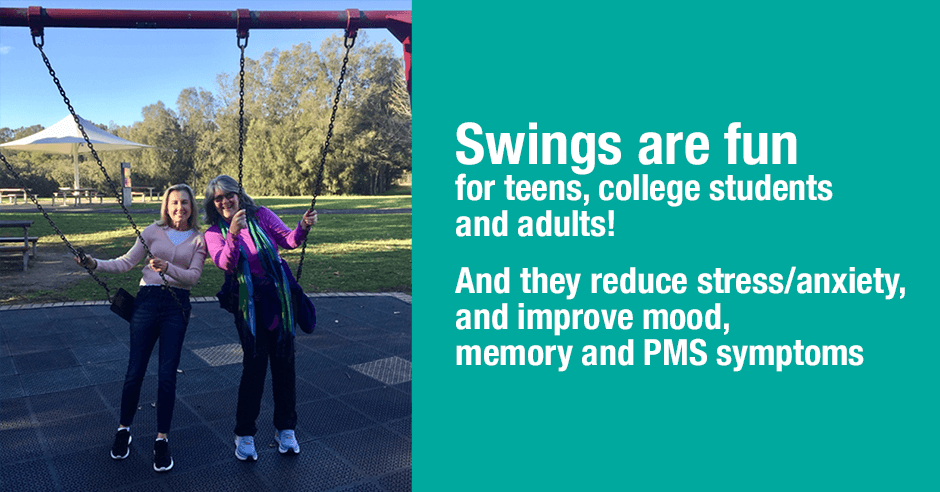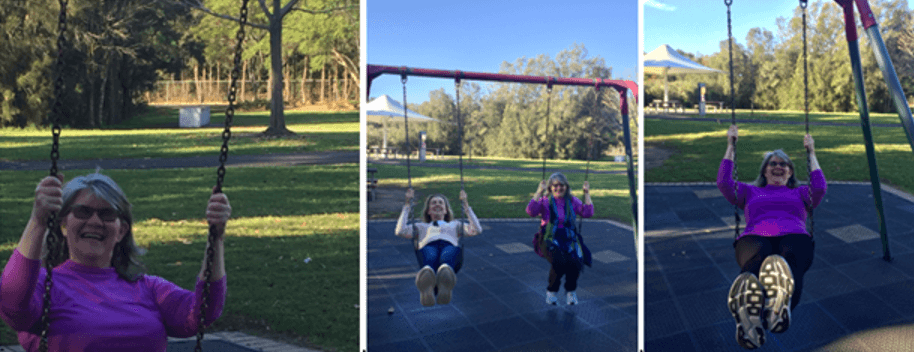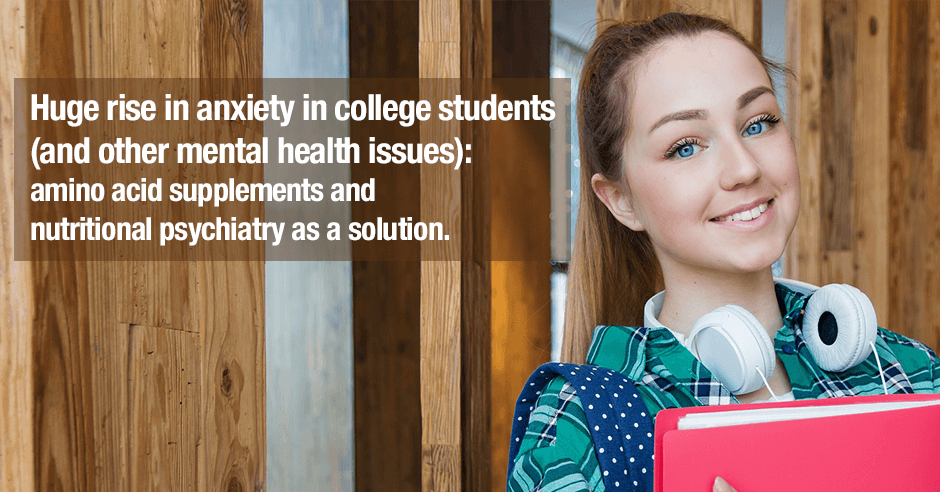
Earlier this month I met up with a dear childhood friend for a walk and catch-up and we both rediscovered the joy of swings. I always suggest a walk or hike or swim when meeting with friends and colleagues, and this time was no different except that I really wanted to go somewhere with a swing!
The reason that I wanted to find a swing set was because I had just read an article about swings and teen girls needing a better place to hang out. I love the outdoors and love to play, laugh and have fun, and I couldn’t resist it once I started looking at the research. I discovered all the wonderful benefits of improved mood, reduced anxiety and stress, improved cognition and memory, reduced PMS symptoms, improved social relationships and reduced pain.
These pictures are us swinging and catching up – we laughed and laughed and had such fun! It’s hard to believe we’ve been friends for close to 50 years and it always feels like we were never apart when we do get together.

Our swing experience made it extra special this time! You can see the pure joy on our faces!
Teen girls needing a better public space to hang out
The recent Bloomberg article I had read, Teen Girls Need Better Public Spaces to Hang Out shares this:
Making space for girls means rethinking which age groups need to swing and climb, how to encourage physical activity (and not just playing a sport), and how to make a safe, sheltered place for outdoor conversation.
And this about movement:
While lack of activity among teens is a major public health issue, many girls are looking for more creative, less competitive ways of moving their bodies.
It features really cool images of swings called “Swing Time.” They are designed by Höweler + Yoon Architecture and deliver “the kind of fun, physical outdoor experience with room for face-to-face conversation that many teen girls are looking for.”
As I mentioned above, I was immediately intrigued because I love the idea of outdoor play and social interaction in a safe place for young girls.
Beth Jones, a Mindset and Wellness Coach who works with teen girls and their moms incorporating movement, play and nutrition, posted the Bloomberg article on Facebook saying:
I love this idea so much. I used to love going to the playground in my teens to swing, hang out, just have a space for me. There’s a reason why my business logo has a girl on a swing. That swinging and twisting are also so great for the vestibular system and can help calm anxiety (the back and forth swinging). Maybe they should bring back some swings to middle and high schools.
I’m familiar with the use of swings in occupational therapy to address sensory processing disorders in children. But I was also very interested to know if there was any research on the health benefits of swings for teens and adults. I went searching and was very pleased with what I found, hence this blog post.
Before we get into the research I’d like to extend a big thanks to Beth Jones for the inspiration for all this! Now the research …..
PMS symptoms improved: mood, stress, anxiety, social relationships, pain and memory
This small study, Vestibular stimulation for management of premenstrual syndrome found the following benefits after 2 months of using the swing in females 18-30 years of age:
- Depression and stress scores decreased
- Anxiety scores decreased (although it was not statistically significant)
- Serum cortisol levels decreased.
- Social relationships improved
- Systolic blood pressure decreased (there was no change in diastolic blood pressure and pulse rate)
- Pain levels decreased
- Spatial and verbal memory improved
These are amazing benefits using something as simple as a swing. I feel we could safely extrapolate to younger teen girls and even women above 30 years of age too.
Swings for stress management in college students
Vestibular stimulation using swings is the specialty of Dr. Mukkadan, Founder and Research Director of Little Flower Medical Research Centre in India. Together with his team, he published the above PMS paper and this paper on Vestibular Stimulation for Stress Management in Students.
They recommend “placement of swings in college campuses … which may be a simple approach to alleviate stress among college students.”
This is such a simple and yet powerful (and also fun!) intervention especially given the huge rise in anxiety and mental health issues in students. It would be a perfect approach to use in conjunction with amino acid supplements and nutritional psychiatry for these students.
According to another study published by his team, college students will also see improved spatial and verbal memory.
What about swings for teen boys and all adults too?
Once I saw the images in the Bloomberg article, and after reading the research, and after playing on swings again after all these years, my thinking started expanding. I believe everyone could benefit from using a swing.
I certainly wanted to swing right away (hence the walk and swing meet up with my friend a few weeks ago) and now seek out swings when I go for walks. I would love to see an area set aside in parks for teen girls (and boys too) and as Beth says, in middle and high schools too. And how about a designated area in parks for adults who want to swing too?
There are now parks with Liberty swings for children and adults in wheelchairs. The vestibular benefits of rocking chairs are helping veterans dealing with substance abuse and mood issues. I also see an application for stress reduction in the workplace. The opportunities are endless.
Here are some of my recommendations:
- Seek out swings in parks. Give it a try to see how you feel and how much you enjoy it!
- Advocate for swings in your communities, middle schools, high schools, colleges and place of business.
- Get a rocking chair for yourself and/or older family members
- Get a swing for your backyard (suitable for teens and adults). I’m looking into options for my backyard and will share more once I find some suitable options.
When did you last go for a swing as an adult? How much fun was it!?
If it’s been some time, does this – my pictures and the research – inspire you to want to look for a swing and have a go again?
Does your teen or college student seek out outdoor play like swings and see benefits?
If you are an OT/occupational therapist or exercise physiologist or other health professional using vestibular therapy with swings please do share so we can all learn.
Feel free to post any questions here too.
